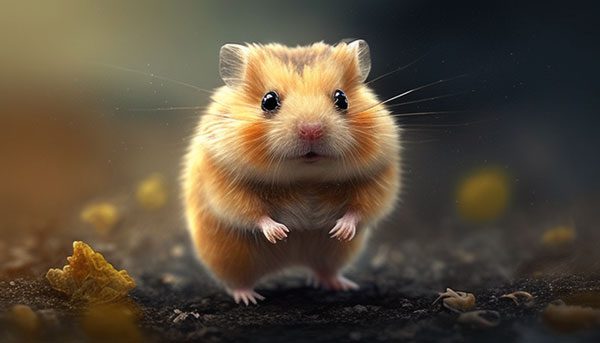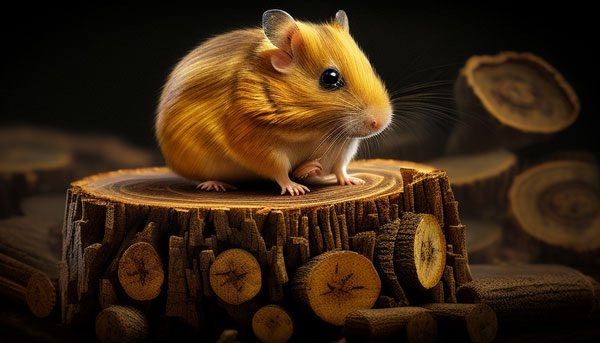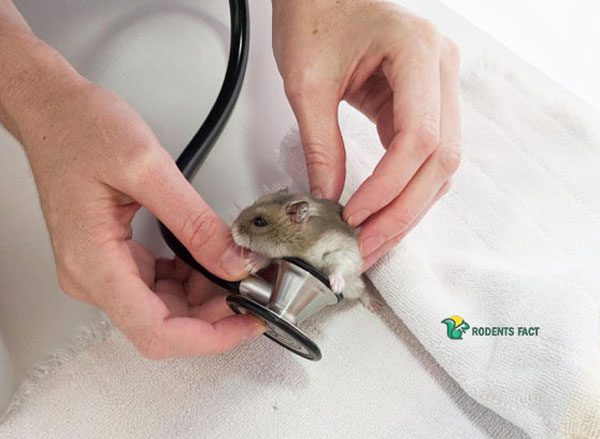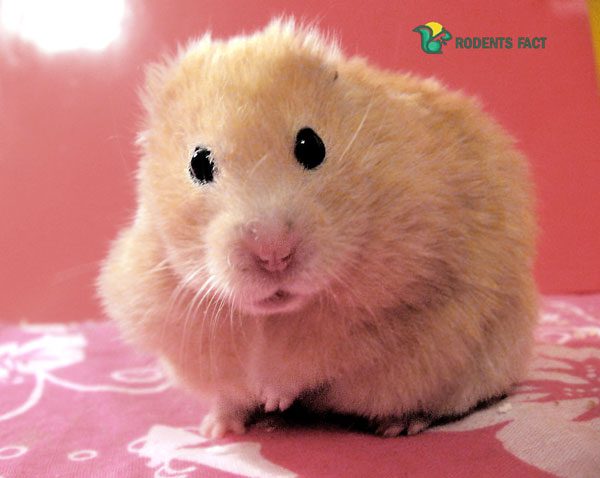How Long Can A Hamster Live With A Tumor?
One of the prettiest pets you could possibly possess is a hamster. Since hamsters are friendly and charming, you can have the best time with them. Although hamsters do not need much pampering, when they get tumors, they need extra care.
But the question is, how long can hamsters live with tumors? It all depends on tumor type, place of tumor, and hamster age. Your hamster can live a full life with timely treatment. But if your hamster’s tumor is in bad shape, you can expect 3 months to 1 year of his life.
If you find your hamster has a tumor, we suggest not panicking because it will worsen. Moreover, you should seek a vet’s help immediately. If you want to learn more about hamsters’ life expectancy with tumors, read on till the end!
How Long Will A Hamster Live With A Tumor?
It is sad to learn that your hamster has a tumor, but don’t assume it will die immediately. Several things contribute to your hamster’s lifespan after diagnosing a tumor, but the most important one is tumor type.

There are two main types of tumors: Malignant and Benign tumors. We will discuss the life expectancy of hamsters with each tumor.
Benign Tumor
Benign tumors do not multiply and spread to other parts of the body. Regarding that, these tumors frequently pop up in hamsters.
If your hamster gets a Benign tumor, you don’t need to worry much, but you must remove it by surgery. The life expectancy with a Benign tumor depends on the tumor site (is it easy to reach to remove surgically), the hamster’s age, and health.

But with Benign tumors, the hamsters mostly live their full life if treated well. Typically, hamsters suffering from Benign tumors live about half a year to one year.
Since the hamster’s typical lifespan is not more than 3 years, your hamster can live a full life. But remember, your hamster’s diet and tumor site will tell you how long your hamster will live.
For example, if the tumors interfere with your hammies’ respiration or feeding passage, you don’t have much hope for your hamster. With such a deadly tumor site, you can expect a few days or weeks of your hamster.
Malignant Tumor
Contrary to Benign tumors, Malignant tumors multiply and spread rapidly, putting your hamster’s life at risk. If your hamster is diagnosed with Malignant tumors or cancer, you don’t have much for your little friend.

Because typically, the malignant tumors give your hamster a maximum of 3 months of life, depending on his health. However, you can stretch this to an additional few months if you diagnose and treat malignancy early.
Moreover, your hamster’s general health, tumor location, and stage of malignancy all contribute to the hamster’s life expectancy. The best you can do for your hamster is adhere to your vet’s suggestion!
How to Know If Hamster Has A Tumor?
Detecting a tumor is not easy unless it pops up on your hamster skin or is grown massively to bulge the skin. If you see an external lump, you should seek a vet’s help as soon as possible.
Why? Because they might merely be fatty deposits, abscesses, or malignant tumors, the secret to a successful treatment is early diagnosis.

Some of the signs and symptoms of internal tumors are:
- Your hamster will change its behavior
- He might not move comfortably
- Your hamster’s eating habits will shift
- Hair loss is also common with tumors
- Your hamster remains hidden in his cage because of pain
- Diarhhea flecked with blood is also a serious indicator of a tumor.
A vet must study a mass sample to detect if the tumor is malignant or benign. They can diagnose the tumor type with a technique known as fine-needle aspiration. With this technique, the vet will insert a tiny needle to gather tumor cells and then analyze the tumor cells for type.

After diagnosis, the vet will schedule the biopsy. During a biopsy, an anesthetic will be used. The vet will remove most of the tumor during the procedure.
Next, to check if the growth is cancerous, the sample is then sent to a lab for examination. Even after surgically removing the tumor, the cancerous tumors leave finger-like developments in other areas.
What to do if a hamster gets a tumor?
If you see a bulging or swelling on your hamster’s body, seek a vet’s help as soon as possible. Since tumors are something that you cannot treat at home, a veterinarian can tell you what the best course of action for your hamster’s healthy life is.

If you want to make your hamster live long, you must do some activities. It is not a good idea to wait for the vet’s appointment and not do anything. You should:
- Give your hamster a lot of water because they might be thirsty.
- Handle them with care and let them stay in a cage as much as possible. Take them out only when required.
- Make sure your hamster is eating well. Also, provide them with a balanced diet.
After visiting the vet, you should strictly adhere to his recommendation. If the tumor is in an easy-to-reach site, your vet might perform surgery to remove the tumors. If they complete a surgery, you must adhere to their guidelines.
It is worth mentioning that a hamster’s small size can make surgery risky and painful. So make sure you are taking care of hamsters well. Moreover, it would help if you also tried to keep hamsters less active after surgery.
You should remove levels from its cage. This will prevent excessive climbing. Moreover, you should provide hamsters with healthy food and drink enough water.

Furthermore, don’t let your hamster’s scar unchecked. Clean the scar regularly and check that it is healing properly. If the tumor is Benign, it will not multiply, but for a Malignant one, keep an eye on your hamster to ensure no new lumps are present.
If you adhere to these guidelines, you can keep your hamster healthy and happy.
How to prevent tumors in Hamsters?
You must remember that older hamsters are more prone to tumors, and you cannot completely overcome tumors. On the other hand, hamsters are also prone to growing tumors genetically. You also don’t have much to do in this case, too.

But you can take steps to lessen their impact. These consist of the following:
Maintaining a balanced diet
To ensure your pet remains healthy, give your hamster a nourishing, antioxidant-rich diet. It will help prevent cancer. Moreover, it would be best to replace unhealthy treats with healthy appetizers like cucumber and cabbage.
Keep toxic substances away
Just as human hamsters are also susceptible to developing cancer from toxins. So, keep your hamster away from anything toxic that is toxic to people!

Visiting the vet
If you want to keep the bulge of the hamster at bay, you should visit a veterinarian as soon as you notice it. This will prevent developing a lump into cancer. So call your vet as soon as you see the symptoms of the tumor!
Can Hamsters Heal From Tumors?
Your hamster can survive a tumor if it is not malignant and easily removed with surgery. Moreover, the hamsters can recover fully with early diagnosis. In addition, internal tumors can also be treatable if they are not interfering with internal organs.

Regarding that, a recent study on hamsters with skin tumors revealed that they could survive as far as 672 days after surgery. This data is promising that your hamster can live a full life with Benign tumors; however, you don’t have much hope for the Malignant ones.
If you’re interested in learning more about hamster health and behavior, you might find our articles on whether an eye infection can be fatal for hamsters and whether hamsters hibernate with their mouth open helpful. Our article on whether an eye infection can be fatal for hamsters explores the risks and complications associated with eye infections in hamsters, and what you can do to prevent and treat them. Meanwhile, our article on whether hamsters hibernate with their mouth open examines the behavior of hamsters during the winter months, and whether they hibernate or simply sleep more. Check out these articles to learn more about keeping your hamster healthy and happy.FAQ
Below we are mentioning some of the most common questions about tumors in hamsters.
Are Tumors Common In Hamsters?
These tiny creatures, unfortunately, frequently suffer from tumors. Note that some cancers are more common in hamsters than others. The most common tumor in the hamster is the adrenal glands tumor, intestinal tumor, kidneys tumor, the reproductive system, and skin.
Moreover, the Syrian breed hamsters are less susceptible to tumors than dwarves. And the best part is that malignant tumors are less likely to occur in hamsters, and benign tumors are not fatal.
Do tumors hurt hamsters?
Tumors are a serious condition, and they can certainly hurt your hamsters. Moreover, the tumors also lead to hair loss, behavioral changes, and diarrhea. Further, benign tumors can be surgically removed with sedation. It will not hurt much.
Also note that when a tumor is small, it will not hurt much to remove as compared to big ones
Conclusion
So now you understand how long a hamster can live with a tumor. If a hamster has a malignant tumor, you can expect 3-6 months of his life at max. On the other hand, with a benign tumor that is also easy to remove surgically, you can expect a year or more of a hamster’s life.
In any case, you should seek medical help for your hamster in case of a tumor. Moreover, you should adhere to your vet’s guidelines!





